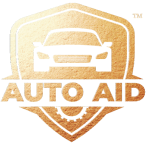Tyre punctures are a common hassle for drivers, but knowing how to repair them can save you both time and money. This guide covers various tyre repair methods, helping you choose the best approach for different puncture types.
Types of Tyre Puncture Repair Methods
1. Patch Repair
Patch repair is a popular method for fixing punctures in the tyre tread.
- Procedure:
- Remove the Tyre: The tyre is removed from the rim.
- Clean the Area: The inner liner of the tyre is cleaned thoroughly.
- Roughen the Surface: The puncture area is roughened to ensure better adhesion.
- Apply the Patch: A rubber patch is applied over the puncture from the inside and vulcanized to create a strong bond.
- Advantages:
- Durable: Provides a long-lasting solution if applied correctly.
- Cost-Effective: Generally inexpensive compared to other methods.
- Disadvantages:
- Limited to Tread Area: Not suitable for sidewall punctures.
- Potential for Weakness: If not applied properly, the patch might fail.
2. Plug Repair
Plug repair involves inserting a plug into the puncture hole from the outside.
- Procedure:
- Prepare the Hole: The puncture hole is cleaned and reamed to ensure a snug fit for the plug.
- Insert the Plug: A plug made of rubber or latex is inserted into the puncture hole using a special tool.
- Trim the Plug: The excess plug material is trimmed flush with the tyre surface.
- Advantages:
- Quick: Ideal for emergencies and can be done without removing the tyre.
- Versatile: Can be used for both tread and sidewall punctures.
- Disadvantages:
- Temporary Fix: Plugs may eventually come loose, especially under high pressure.
- Risk of Damage: Improper application can further cause tyre damage.
3. Combination Repair
Combination repair uses a patch and a plug for a more secure fix.
- Procedure:
- Remove the Tyre: The tyre is removed from the rim.
- Prepare the Puncture: The puncture hole is cleaned and reamed.
- Insert the Plug: A plug is inserted into the puncture from the outside.
- Apply the Patch: A patch is then applied to the inner liner of the tyre over the plug.
- Advantages:
- Reliable: Combines the benefits of both methods for a durable repair.
- Disadvantages:
- Complex: Takes more time and skill, often requiring professional help.
4. Tyre Replacement
Replacing the tyre is necessary for severe damage.
- Procedure:
- Remove the Damaged Tyre: The damaged tyre is removed from the rim.
- Install a New Tyre: A new tyre is fitted onto the rim and properly inflated.
- Advantages:
- Safety: Ensures maximum safety and performance.
- Reliability: Eliminates risks associated with multiple repairs.
- Disadvantages:
- Expensive: More costly than repairing.
- Time-Consuming: Finding and fitting a new tyre takes longer.
- Environmental Impact: Disposal of old tyres and production of new ones affect the environment.
Choosing the Right Tyre Puncture Repair Method
Selecting the correct tyre repair method depends on the puncture’s location, size, and severity:
Tread Punctures:
Small punctures can be fixed with a patch or plug. Combination repairs work best for larger punctures.
Sidewall Punctures:
More dangerous and typically require replacement, though a plug may serve as a temporary solution.
Multiple Punctures:
Generally, it’s safer to replace the tyre if it has multiple punctures.
Also Read – DIY Tyre Puncture Repair.
Professional Tyre Repair Services
For reliable and expert car tyre puncture repair, consider professional services like Autoaid. Their experienced technicians use high-quality materials and advanced techniques to ensure safe and durable repairs.
Autoaid Puncture Repair Services:
- Experienced Technicians: Skilled in handling various types of tyre repairs.
- Quality Materials: Uses top-grade patches and plugs for repairs.
- Convenient Service: Offers mobile repair services, bringing the expertise to your location.
- Safety First: Prioritizes the safety and reliability of repairs, ensuring peace of mind for drivers.
For more information on professional tyre repair services, download the Autoaid app and visit their website.
FAQs About Tyre Puncture Repair
Q1: What are the different types of tyre puncture repair?
A1: The main types include patch repair, plug repair, combination repair, and tyre replacement.
Q2: Which tyre puncture repair method is the best?
A2: The best method depends on the puncture’s location and severity. Patch repair is ideal for small tread punctures, plug repair for sidewalls, combination repair for robust fixes, and replacement for severe damage.
Q3: How many puncture repairs can a tyre have?
A3: A tyre can undergo multiple repairs if the punctures are small and in different areas. However, excessive repairs can weaken the tyre, making replacement a safer option.
Q4: What is a major tyre repair?
A4: Major repairs involve fixing large punctures or damage in critical areas like the sidewalls. These repairs are complex and may affect the tyre’s safety and performance if not done properly.
Q5: Is it safe to drive on a repaired tyre?
A5: Yes, if the repair is done correctly, it is safe to drive on a repaired tyre. However, regular inspections and maintenance are recommended to ensure ongoing safety.
Q6: How long does a tyre repair take?
A6: The time required for a tyre repair varies depending on the method. Plug repairs can be done in minutes, while patch and combination repairs may take up to an hour.
Conclusion
Understanding the different tyre puncture repair methods is crucial for maintaining your vehicle’s safety and performance. Whether you opt for a patch, plug, combination repair, or tyre replacement, ensure the method suits the puncture’s severity and location. Proper tyre maintenance and timely repairs can significantly enhance your vehicle’s performance and safety on the road. By knowing these methods and relying on professional services like Autoaid, you can keep your tyres in top condition and drive with confidence. Download the Autoaid app for convenient and professional tyre repair services

